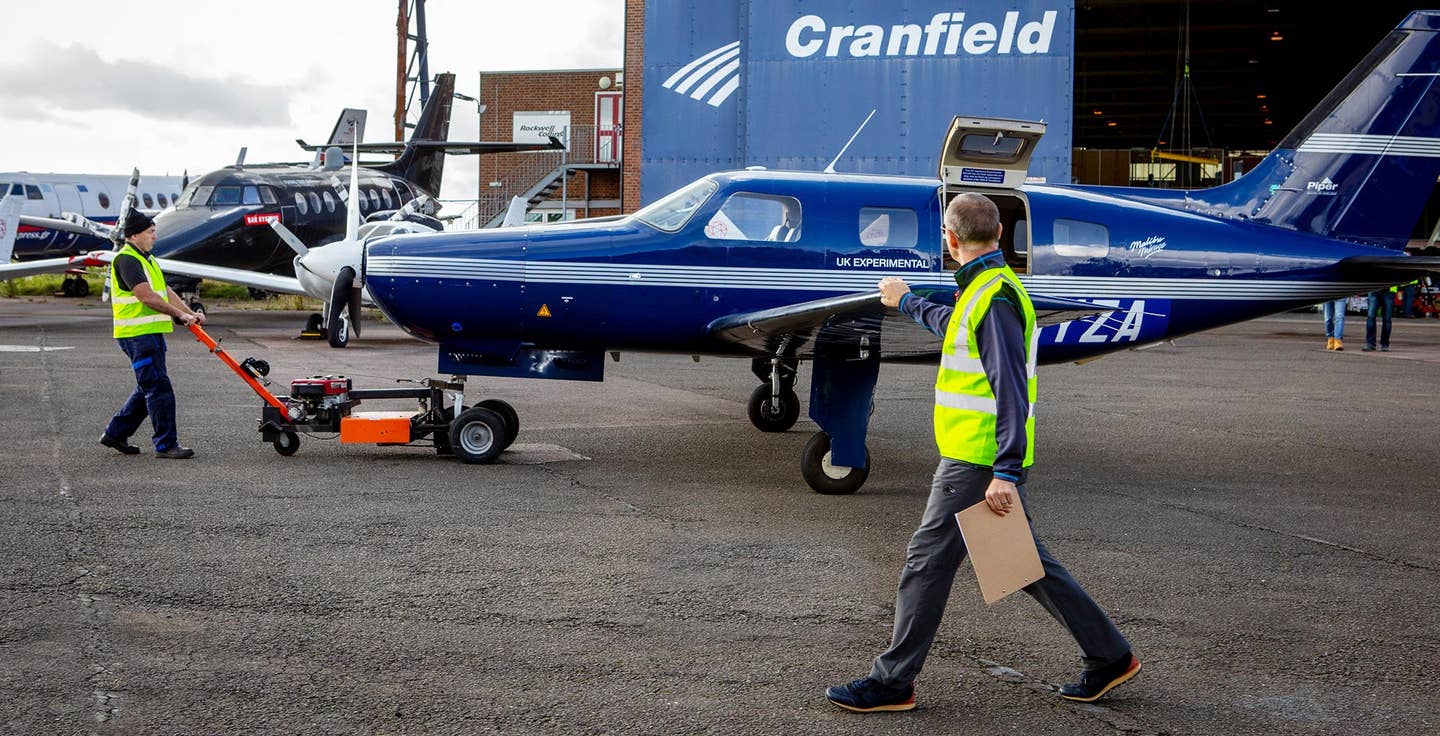
The Piper M-class demonstrator had been based at the Cranfield airport since 2020—shown here from September 2020 preparing for its first flight in the UK. ZeroAvia
ZeroAvia’s Piper M-class demonstrator—developed to test flight on hydrogen power—suffered an off-airport landing on April 29, 2021, just outside of the perimeter of the Cranfield airport in the UK. The aircraft was conducting a routine flight within the latter stages of its six-seat HyFlyer testing regime—which was expected to conclude in the next few weeks—recorded as ZeroAvia Test 86, the sixth test flight within the current segment of the program, according to a statement by the company. “The aircraft landed normally on its wheels in a flat grass field and almost came to a stop, but was damaged as it caught the left main gear and wing in the uneven terrain at the end of the field at low speed. Everybody involved is safe, and without injury. The incident was immediately reported to the Air Accidents Investigation Branch (AAIB), and the Fire Service attended on the ground, as is the standard procedure.”
ZeroAvia reported the current known facts regarding the incident: “The flight conformed to the approved test route over the airport; the structural integrity of ZeroAvia systems was maintained throughout the incident sequence and there were no unintended hydrogen or electrical releases and no fire; after the landing, the crew were able to safeguard the battery and safely release hydrogen from the onboard tanks, following ZeroAvia safety protocol; no fluid leaks were observed at the time; and full data logs were preserved and will be used in our investigation.” There was no response from the company at press time as to what led to the landing in the field, whether it was the result of a power loss, loss of control, or other emergency situation.
The six-seat HyFlyer test platform had been based at the Cranfield airport since shortly after the company obtained significant funding from UK Aerospace Research and Technology program, under the auspices of the Aerospace Technology Institute in September 2019. The company addressed the impact to the testing program as well, stating that the accident investigation “will undoubtedly disrupt our six-seat HyFlyer demonstration program that was coming to an end in the following weeks. However, we do not expect any negative impact on our commercial-intent HyFlyer 2 program targeting 10 to 20 seat aircraft, or our large-engine development program targeting 50-plus seat aircraft.”

Sign-up for newsletters & special offers!
Get the latest FLYING stories & special offers delivered directly to your inbox






